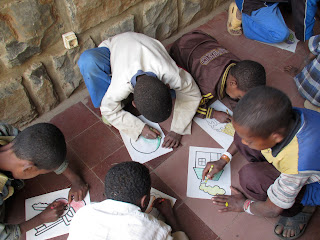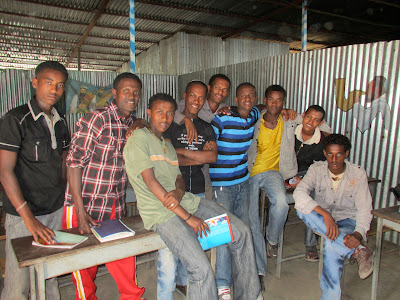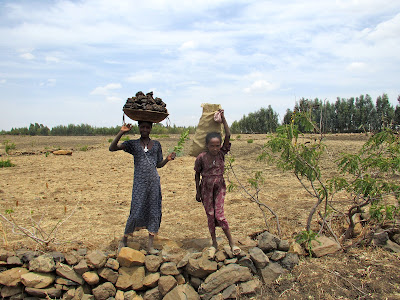I cannot believe that my time in Ethiopia is over, and I am heading home already. Six months went by quicker than I ever imagined. Sometimes I looked around and had to pause to remind myself where I was and what I was doing. I thought, "This is my life?" Despite my previous travels and semester abroad in Argentina, my life in Ethiopia resembled nothing I had ever experienced before. And nothing could have fully prepared me for this journey.
At first it was a challenge to adapt to such a distinct culture. But I managed and have come to not only appreciate but love Ethiopian culture. I am mesmerized by the traditional music and mystified by the eskista. How can they move like that? How is that physically possible? How can the children do it so naturally? I adore the sight of Ethiopians in the morning flooding out of church. A sea of men and women clad in simple white, often with colorful borders and accents. I love the smoky smell of frankincense mingling with the fresh scent of grass during coffee ceremony. I enjoy listening to the the rich myths and history of the country and getting to know the Habeshas. It's always fun to surprise the Habeshas by using my limited Amharic and name-dropping the handful of Ethiopian musicians, athletes, and politicians I know.
The chance to live and teach in Gonder was a once-in-a-lifetime opportunity that I will always remember. It's hard for me to reflect quite yet, but I know that my time abroad has already shaped many of my views on education, equality, NGO's, community empowerment, and development. It has affected me significantly and will surely continue to do so when I return home. "Once you have traveled, the voyage never ends, but is played out over and over again in the quietest chambers, that the mind can never break off from the journey." I couldn't have articulated it any better than Pat Conroy. Travel, particularly immersion, is a catalyst. It tests our assumptions and leads us to think beyond our former boundaries, to think in bigger, bolder, broader ways.
Things I Will Miss:1. Friendly Gonderians
2. Lily and Sophie
6. Never having to use a blowdryer
7. Playing with the children and making them laugh despite the language barrier
1. Catching up with friends and family
2. Sushi and salads
3. Manicures and pedicures
4. Having electricity, wifi, and hot, running water around the clock
5. Wearing shorts
6. The upcoming JDC Next Gen Ethiopia Event in New York
7. Spending a few weekends at the beach this summer
8. Starting school

































































